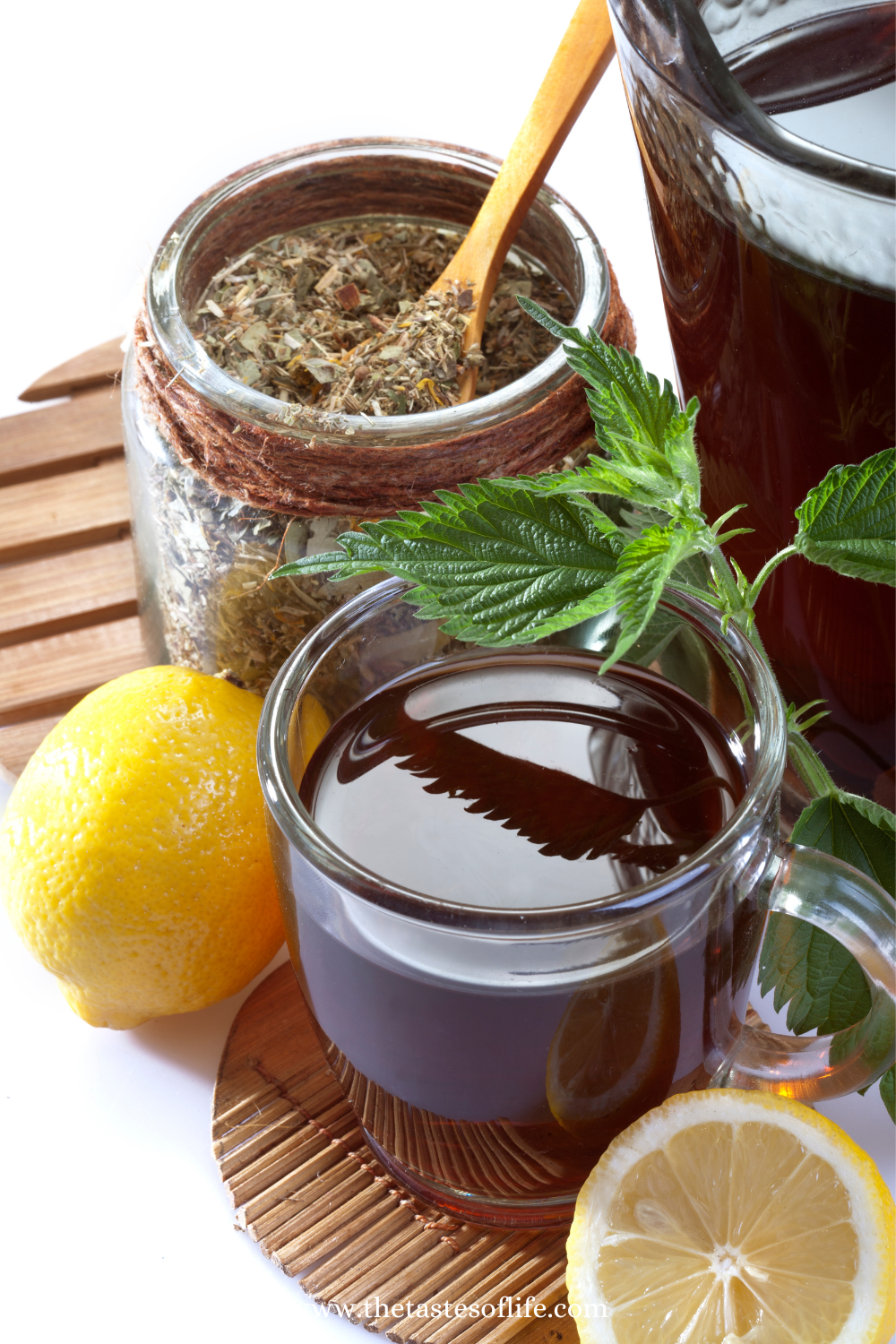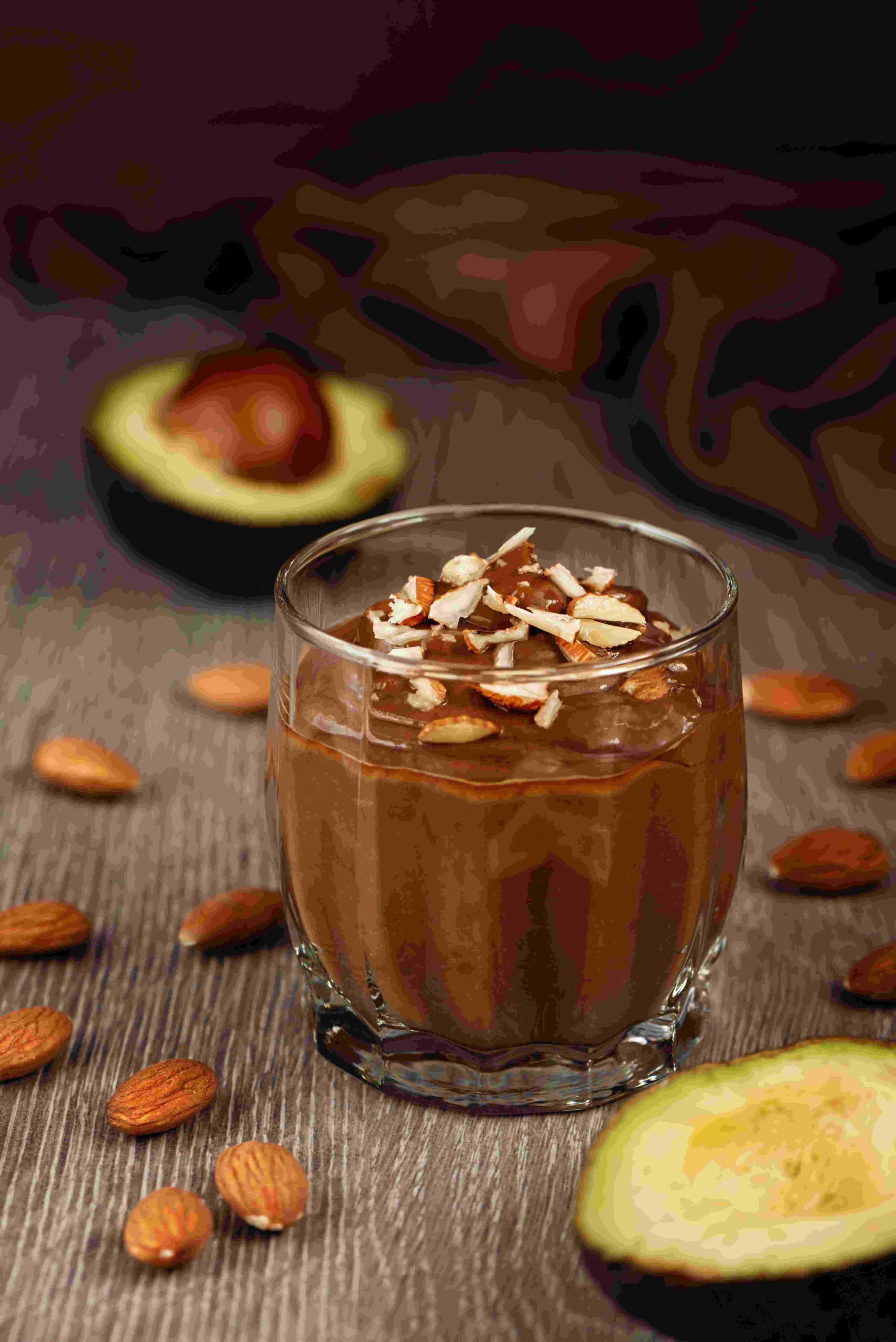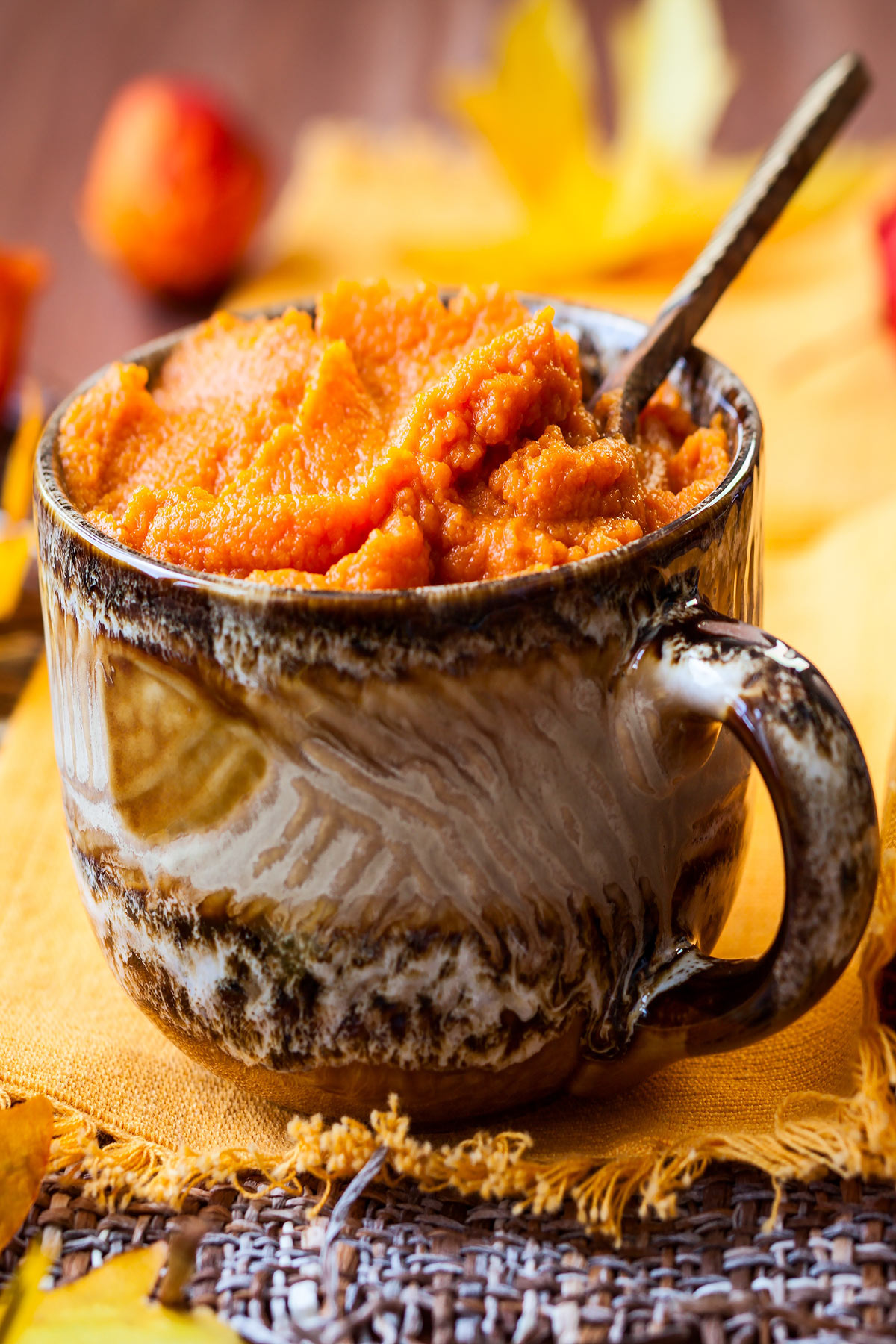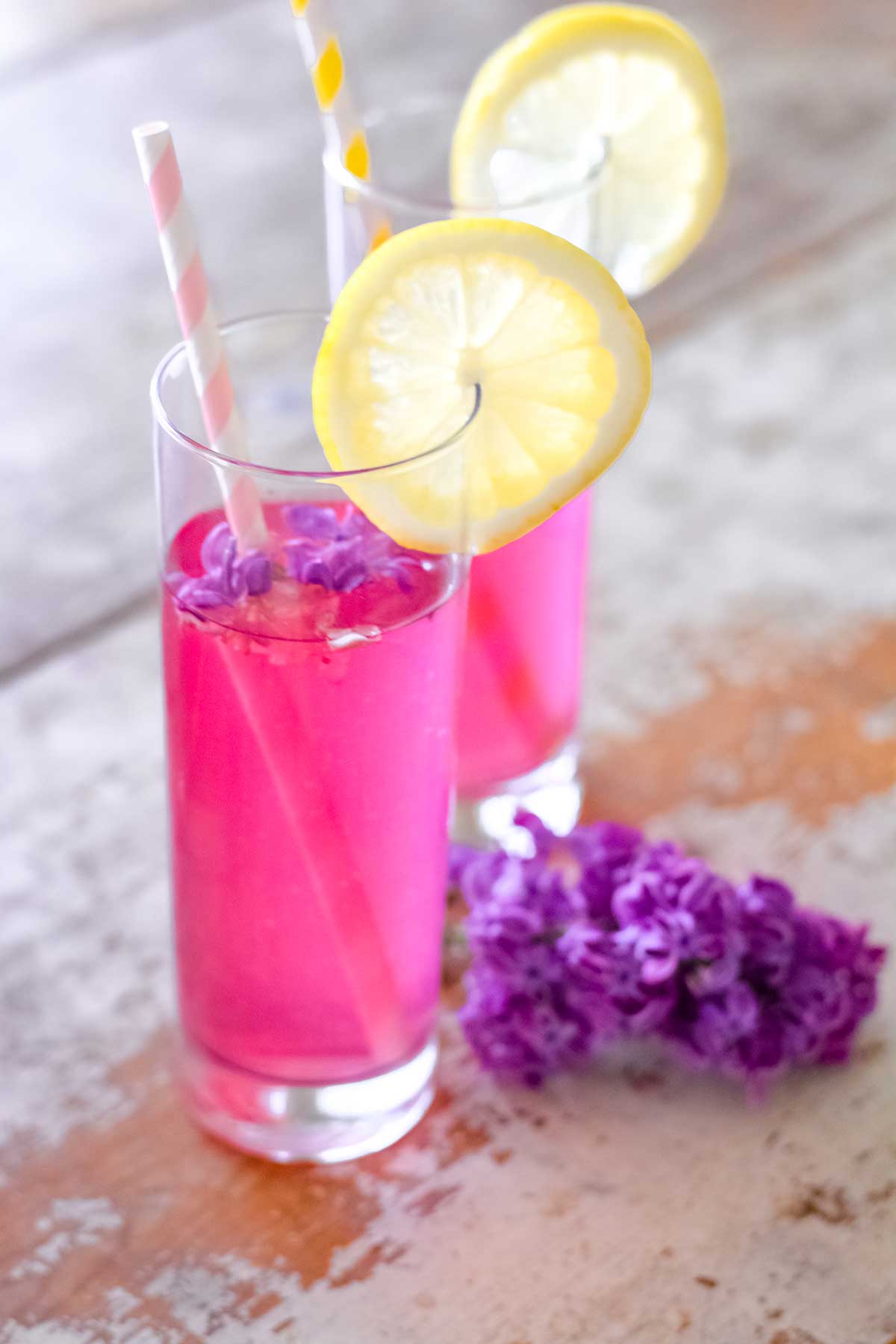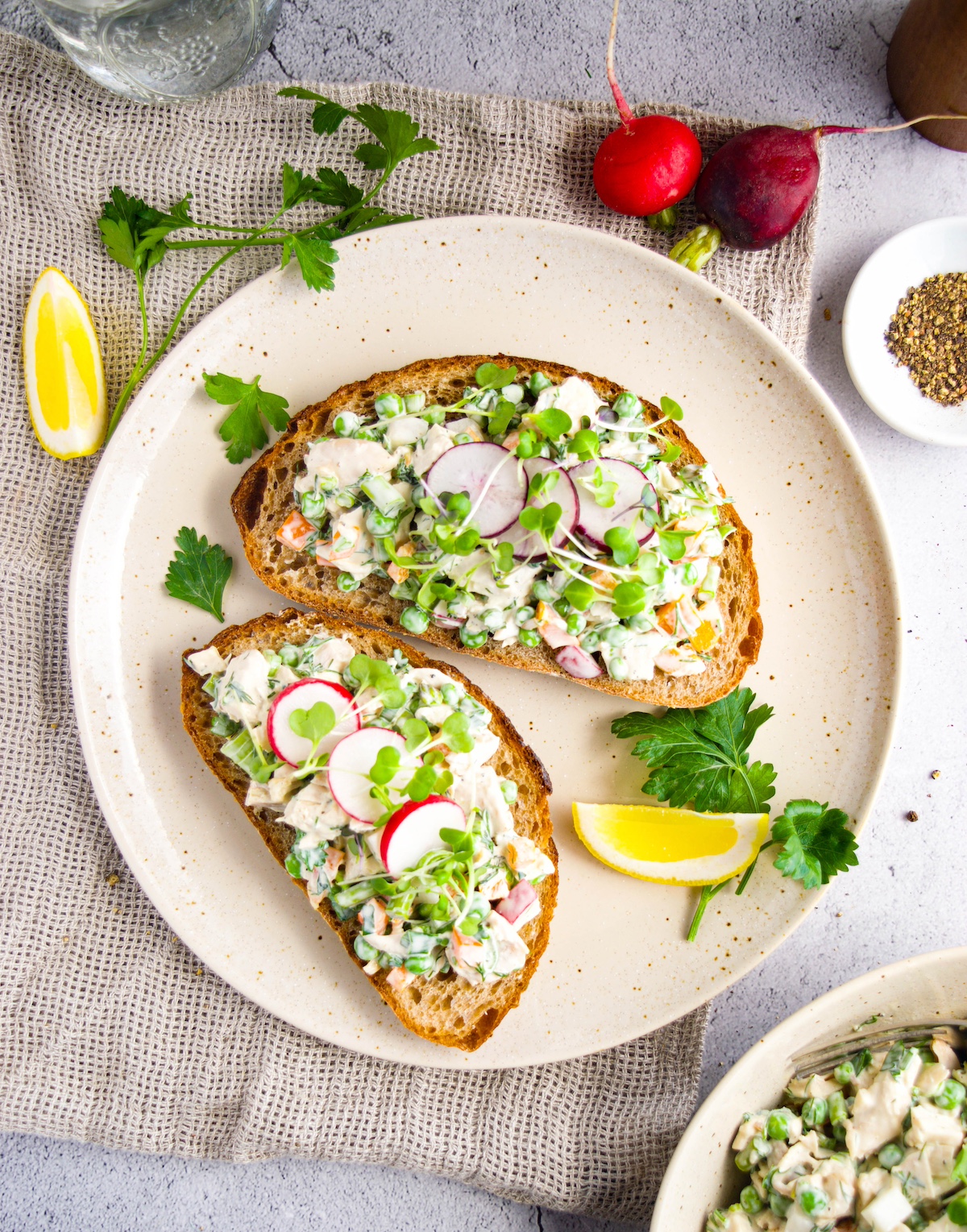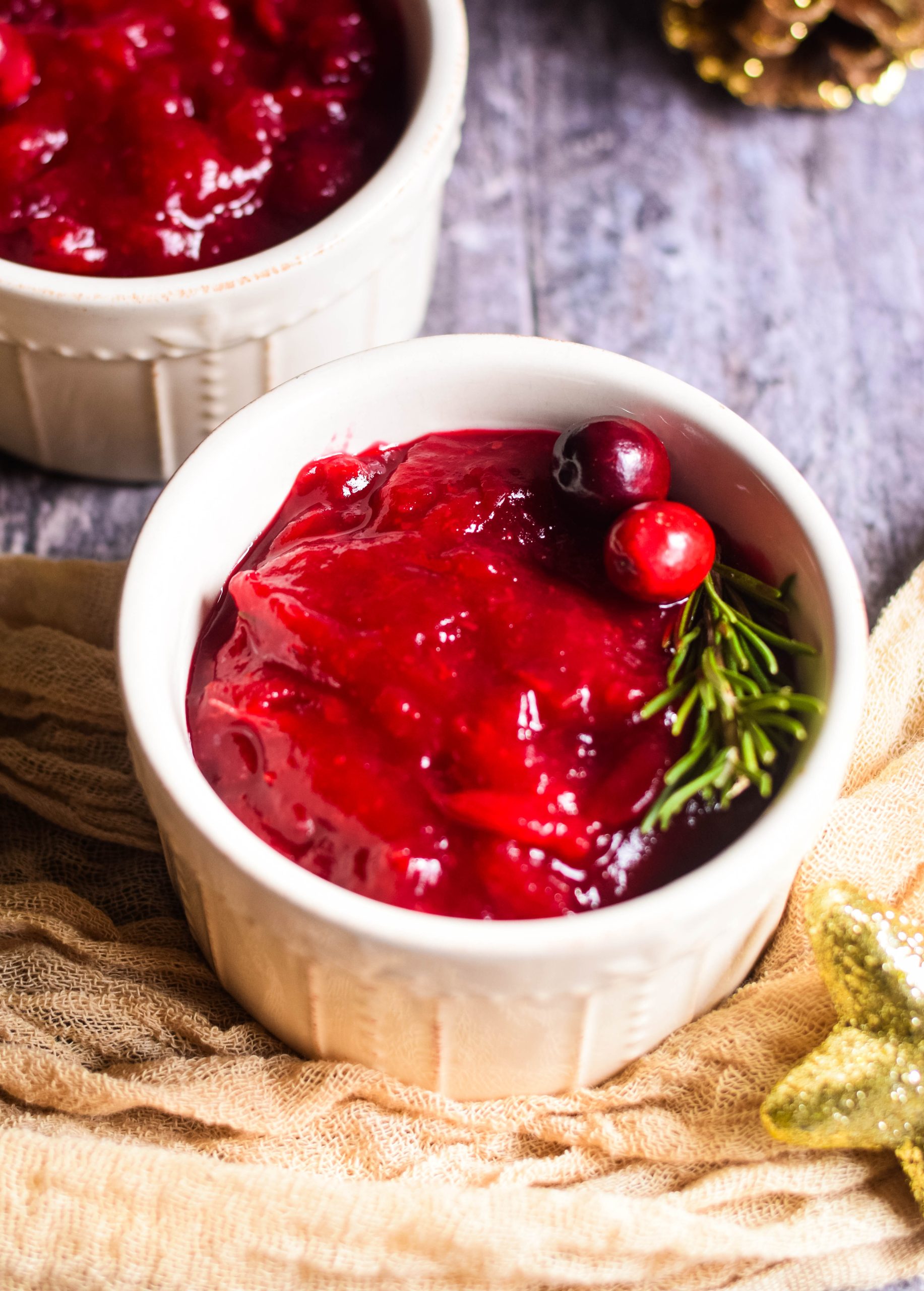How To Make Honey Glazed Chicken With Golden Beet Salsa
The Honey Glazed Chicken with Golden Beet Salsa is a dish that boasts a perfect balance of sweet and savory flavors. The honey glaze subtly sweetens the tender, juicy chicken breasts, while the Dijon mustard and garlic powder provide a savory and slightly tangy flavor.
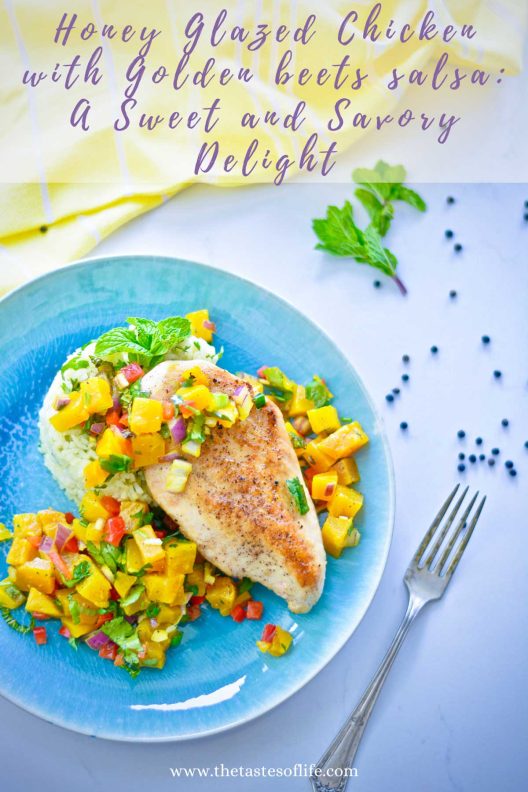
Honey Glazed Chicken with Golden Beets Salsa: A Sweet and Savory Delight
The golden beet salsa in Honey Glazed Chicken with Golden Beet Salsa is a delicious and refreshing contrast to the richness of the chicken with its bright and earthy flavors. The sweetness of the beets is balanced by the lemon juice acidity and the red onion’s sharpness. At the same time, the cilantro provides a fresh, herbal note.
I’m a huge fan of beets! They are one of my favorite vegetables I used to eat as a child in Poland. I like to go and pick up beautiful beets at the local farmers market when they are in season.
Why Honey Glazed Chicken with Golden Beets Salsa?
Honey Glazed Chicken with Golden Beet Salsa is a classic dish that is easy to make, and the combination of sweet and savory flavors is irresistible. Honey is a natural sweetener that adds depth and complexity to the dish and provides health benefits. Chicken is a lean protein source low in fat and nutrients, making it an excellent choice for a healthy meal. And let’s be honest, who doesn’t love a good chicken dish?
Health Benefits of Honey Glazed Chicken
Honey-glazed chicken with golden beet salsa is a delicious and nutritious dish that offers a variety of health benefits. Here are some of the vital health benefits of the ingredients in this dish:
Chicken: Chicken is an excellent source of lean protein essential for building and repairing muscle tissue. It’s also rich in B vitamins and minerals like phosphorus and selenium.
Honey: Honey is a natural sweetener that’s packed with antioxidants, which can help protect your body against oxidative stress and inflammation. It is also antibacterial and may help soothe a sore throat or cough.
Golden beets: Golden beets are a good source of fiber, which can help promote healthy digestion and keep you feeling full. They’re also rich in vitamins and minerals like potassium, vitamin C, and folate.
Red onion: Red onion contains quercetin, a flavonoid with antioxidant and anti-inflammatory properties. It also has prebiotic properties, which means it can help feed the good bacteria in your gut and support digestive health.
Cilantro: Cilantro is a good source of vitamin K, which is essential for bone health and blood clotting. It also has antibacterial properties and may help support healthy digestion.
Olive oil: Olive oil is rich in heart-healthy monounsaturated fats, which can help lower cholesterol levels and reduce the risk of heart disease. It’s also a good source of vitamin E, an antioxidant that can help protect against oxidative stress and inflammation.
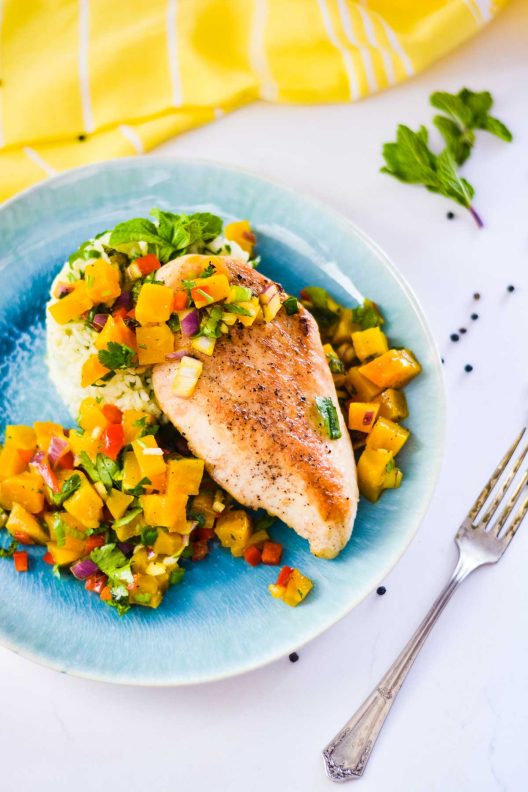
Tips for Making it
- Chicken: Opt for boneless, skinless chicken breasts or thighs for succulent meat that readily absorbs the flavors of the glaze.
- Honey: Choose high-quality honey to impart a rich sweetness to the dish.
- Soy Sauce: Provides depth of flavor and adds a savory umami element to the glaze.
- Garlic and Ginger: Infuse the glaze with aromatic notes and subtle warmth.
- Golden Beets: These vibrant root vegetables add a burst of color and earthy sweetness to the salsa.
- Fresh Herbs: Incorporate parsley or cilantro for brightness and freshness.
- Citrus: Lime, orange juice, or lemon juice adds a refreshing tang to balance the glaze’s sweetness.
How to Make It
- In a small saucepan, combine honey, soy sauce, black pepper, minced garlic, grated ginger, and a squeeze of citrus juice.
- Simmer the mixture over medium heat until it thickens slightly, stirring occasionally to prevent burning.
- Taste and adjust the balance of flavors as needed, adding more honey for sweetness or soy sauce for depth of flavor.
- Once the glaze reaches the desired consistency, please remove it from the heat and let the chicken rest to cool slightly.
Preparing the Golden Beet Salsa
The golden beet salsa is the perfect complement to the honey-glazed chicken, offering a refreshing contrast of flavors and textures. Here’s how to prepare it:
- Start by roasting golden beets until fork tender, then allowing them to cool before peeling. Small dice the beets.
- Combine the diced golden beets in a large bowl with finely chopped herbs, such as parsley or cilantro.
- Drizzle the salsa with olive oil and a squeeze of citrus juice, then season with salt and pepper to taste. You can also add a different acid such as red wine vinegar, white wine vinegar, white balsamic vinegar, or even balsamic dressing or simple vinaigrette you have on hand.
- Gently toss the ingredients until evenly coated, then set the salsa aside to allow the flavors to meld.
Optional:
Add some orange zest or lemon zest to bring more flavor to the beets.
Mastering the Cooking Technique
With our honey glaze and golden beet salsa prepared, it’s time to focus on cooking the chicken to perfection:
- Preheat your oven to 375°F (190°C) and line a baking sheet with parchment paper or aluminum foil for easy cleanup.
- Season the chicken breasts or thighs with salt and pepper, then brush them generously with the honey glaze, reserving some for basting.
- Transfer the glazed chicken to the prepared baking sheet to the preheated oven.
- Bake the chicken for 20-25 minutes, basting occasionally with the remaining honey glaze, until it is cooked and caramelized on the outside.
- Once the chicken is done, remove it from the oven and allow it to rest for a few minutes before serving.
Plating and Presentation
A perfect way of plating, and my favorite way, is:
- Arrange the honey-glazed chicken on a serving platter, garnishing it with fresh herbs for a pop of color.
- Spoon the golden beet salsa alongside the chicken, allowing its vibrant hues to contrast beautifully with the glazed meat.
- Serve the dish with additional lemon or lime wedges on the side for an extra burst of citrus flavor.
- Encourage guests to drizzle any remaining honey glaze over their portions for an added touch of indulgence.
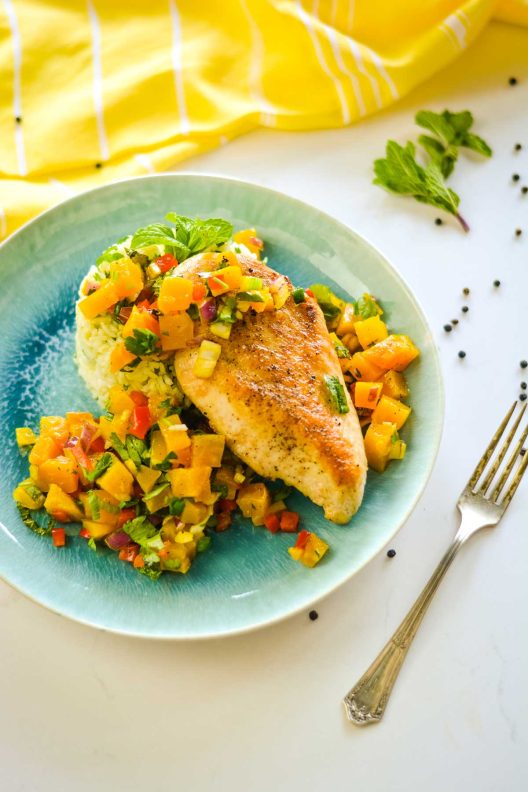
How to Roast Beets
Roasting beets is a simple yet delightful way to enhance their natural sweetness and earthy flavor.
- Preheat your oven to 400°F (200°C) and line a baking sheet with parchment paper or aluminum foil for easy cleanup.
- Start by trimming the tops and roots off the beets, leaving about an inch of stem intact. This helps prevent the beets from bleeding too much color during roasting.
- Wash the beets thoroughly under cold running water to remove dirt or debris, then pat them dry with a clean kitchen towel.
- Place beets on the prepared baking sheet with a piece of parchment paper on it, leaving space between each beet to ensure even cooking.
- Drizzle the beets with extra virgin olive oil and season them with salt and pepper. If desired, add herbs such as fresh thyme, rosemary, or a couple of garlic cloves for extra flavor. Add a little bit of cold water.
- Wrap the baking sheet in a parchment paper. I dont use aluminum foil (here is why).
- Transfer the baking sheet to the preheated oven and roast the beets for 45-60 minutes, depending on their size. Check for doneness by inserting a fork or knife into the thickest part of the beet – it should glide in easily when the beets are fully cooked.
- Once the beets are tender, remove them from the oven. Be cautious, as steam will escape when you remove the parchment paper.
- Allow the roasted beets to cool slightly before handling them. Once they are cool enough to touch, use a paper towel to gently rub off the skins – they should peel away easily.
- Once peeled, you can slice, dice, or serve the roasted beets whole, depending on your preference. They can be enjoyed warm as a side dish or salad ingredient or stored in the refrigerator for later use.
Why Use Golden Beets?
Golden beets, also known as yellow beets, offer a unique twist to traditional red beets, both in appearance and flavor. Here’s why golden beets are a fantastic choice and how their taste differs from that of red beets:
- Milder Flavor: Golden beets have a milder, sweeter flavor than red beets. While both varieties share earthy undertones, golden beets are often described as having a less pronounced earthy taste, making them more palatable for individuals who may find red beets too strong or “earthy.”
- Less Earthy Taste: One of the main differences between golden and red beets is the level of earthiness in their flavor profile. Red beets are known for their intense earthy taste, which some people find overpowering. Golden beets, on the other hand, offer a more subtle earthiness, allowing their natural sweetness to shine through.
- Appearance: As the name suggests, golden beets have a vibrant golden-yellow hue, which adds a splash of color and visual appeal to dishes. This bright color can make them particularly appealing for salads, side dishes, and other culinary creations where visual presentation is essential.
- Versatility: Like red beets, golden beets are incredibly versatile in the kitchen. They can be roasted, boiled, steamed, or even eaten raw, and their sweet flavor pairs well with a wide range of ingredients, from tangy citrus to rich cheeses.
- Milder Staining Potential: While both red and golden beets can stain hands and surfaces during preparation, some people find that golden beets have slightly less staining potential than their red counterparts. However, it’s still a good idea to handle them with care and use gloves or wash hands thoroughly after handling to prevent staining.
Equipment
Baking Sheet
Mixing Bowls
Saucepan
Basting Brush
Chef’s Knife
Cutting Board.
Tongs
Measuring Spoons and Cups
Oven Mitts.
Citrus Juicer
Storing Honey Glazed Chicken
- Refrigeration: Allow the honey-glazed chicken to cool completely to room temperature before storing it. Place it in an airtight container or wrap it tightly with aluminum foil or plastic wrap.
- Refrigerator Shelf Life: Honey-glazed chicken can be stored in the refrigerator for up to 3-4 days.
- Freezing (Optional): If you don’t plan to consume the chicken within a few days, you can freeze it for longer storage. Wrap individual portions tightly in plastic wrap or aluminum foil, then place them in a freezer-safe container or freezer bag. Frozen honey-glazed chicken can be stored for up to 2-3 months.
Reheating Honey Glazed Chicken
- Oven Method: Preheat your oven to 350°F (175°C). Place the refrigerated or thawed honey-glazed chicken on a baking sheet lined with parchment paper or aluminum foil. Cover the chicken loosely with foil to prevent it from drying out, then reheat in the oven for 15-20 minutes, or until heated through.
- Microwave Method: Place individual portions of honey-glazed chicken on a microwave-safe plate for a quicker reheating option. Cover with a damp paper towel to retain moisture and prevent splattering. Microwave on medium power for 1-2 minutes or until heated through, checking and stirring halfway through.
Storing Golden Beet Salsa
- Refrigeration: Transfer any leftover golden beet salsa to an airtight container and refrigerate promptly. Properly stored, it will maintain its quality for up to 3-4 days.
- Freezing (Not Recommended): Due to its fresh vegetable ingredients and acidic components, golden beet salsa does not freeze well and may become watery and lose texture upon thawing. It’s best to enjoy it fresh.
Reheating Golden Beet Salsa
Golden beet salsa is typically served cold and does not require reheating. However, if you prefer it slightly warmed, you can allow it to come to room temperature or gently heat it in a saucepan over low heat, stirring occasionally, until warmed through.
General Tips:
- Always store honey-glazed chicken and golden beet salsa separately to prevent the flavors from mingling and maintain their textures.
- When reheating chicken, be careful not to overcook it, as this can lead to dryness.
- Before consuming reheated chicken, ensure it reaches an internal temperature of 165°F (74°C) to ensure it’s safe to eat.
This Honey Glazed Chicken with Golden Beet Salsa is a perfect dish for a dinner party!
Did you make this recipe?
Please let me know how it turned out for you! Leave a comment below and share a picture on Instagram with the hashtag #thetastesoflifeholisticblog
More Chicken Recipies
Healthy Baked Chicken with Creamy Cashews Sauce
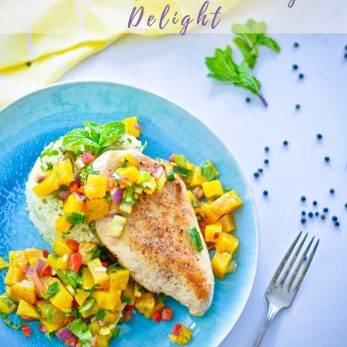
Why Honey Glazed Chicken with Golden Beets Salsa
Ingredients
For the chicken:
- 4 boneless, skinless chicken breasts
- 1/4 cup honey
- 1/4 cup soy sauce
- 2 tbsp olive oil
- 2 cloves garlic, minced
- Salt and pepper to tast
For the golden beet salsa:
- 2 golden beets, peeled and julienned
- 1/2 red onion, finely chopped
- 1/4 cup cilantro, chopped
- 1 tbsp honey
- 1 tbsp olive oil
- 1 red bell pepper diced
- 1 tbsp lemon juice
- salt and pepper to taste
Instructions
- Preheat your oven to 400°F (200°C) or preheat your grill to medium-high heat.
- In a mixing bowl, whisk together honey, soy sauce, olive oil, minced garlic, salt, and pepper to make the marinade for the chicken.
- Add the chicken breasts to the marinade and toss to coat. Let the chicken marinate for at least 30 minutes, or up to 2 hours for maximum flavor.
- If baking, line a baking sheet with aluminum foil and place the chicken on the sheet. Bake for 20-25 minutes or until the internal temperature reaches 165°F (74°C).
- If grilling, place the chicken on the grill and cook for 6-8 minutes per side or until the internal temperature reaches 165°F (74°C).
- Dice golden beets (how to roast beets in the notes below) or you can and red onion to the skillet and sauté until te
- When the beets are ready add cilantro, honey, lemon juice, salt, and bell pepper. Mix all the ingredeientces.
- Once the chicken is done, remove it from the oven or grill and let it rest for a few minutes.
- To serve, slice the chicken breasts and top with a generous spoonful of golden beet salsa. Enjoy your honey-glazed chicken with golden beet salsa!
Notes
- Preheat your oven to 400°F (200°C) and line a baking sheet with parchment paper or aluminum foil for easy cleanup.
- Start by trimming the tops and roots off the beets, leaving about an inch of stem intact. This helps prevent the beets from bleeding too much color during roasting.
- Wash the beets thoroughly under cold running water to remove dirt or debris, then pat them dry with a clean kitchen towel.
- Place the beets on the prepared baking sheet, leaving space between each beet to ensure even cooking.
- Drizzle the beets with olive oil and season them with salt and pepper. You can add herbs such as thyme or rosemary for extra flavor if desired. Add a little bit of water.
- Wrap the baking sheet in a parchment paper. I dont use aluminum foil (here is why).
- Transfer the baking sheet to the preheated oven and roast the beets for 45-60 minutes, depending on their size. Check for doneness by inserting a fork or knife into the thickest part of the beet – it should glide in easily when the beets are fully cooked.
- Once the beets are tender, remove them from the oven. Be cautious, as steam will escape when you remove the parchment paper.
- Allow the roasted beets to cool slightly before handling them. Once they are cool enough to touch, use a paper towel to gently rub off the skins – they should peel away easily.
- Once peeled, you can slice, dice, or serve the roasted beets whole, depending on your preference. They can be enjoyed warm as a side dish or salad ingredient or stored in the refrigerator for later use.

